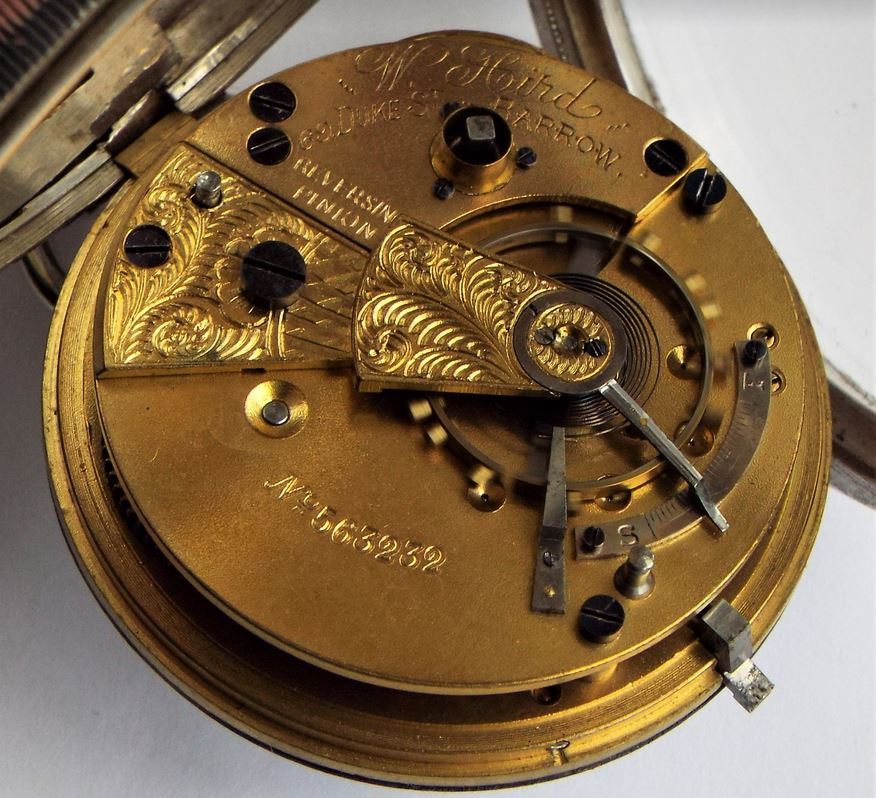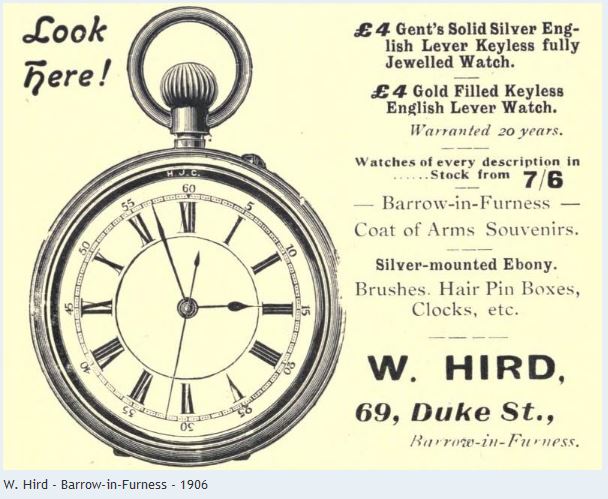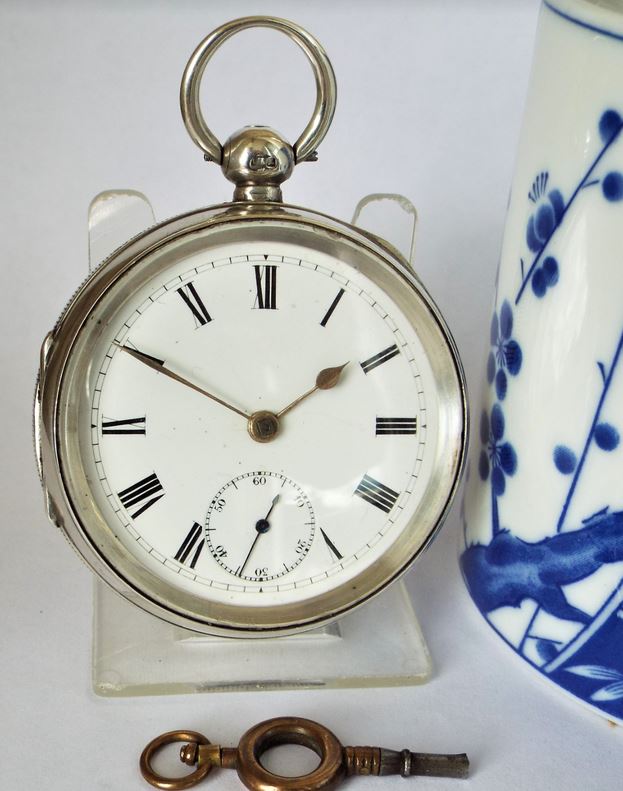Last updated on May 11, 2024
I am always looking to add a new antique watch to my collection. Typically, I am on the lookout for something specific on my wish list. At the moment, at the top of that list, is a Borgel trench watch. However, just because I am looking for a Borgel, doesn’t mean I won’t consider something else that I come across, such as this antique pocket watch from the Lancashire Watch Company (LWC). The watch was being offered by one of my preferred antique watch dealers, The Vintage Wrist Watch Company. Admittedly, LWC is not high on my wish list, but it is still there. This antique silver Lancashire Watch Company pocket watch had a couple of other interesting features that magnified my interest.
Firstly, the movement plate was engraved with the term REVERSING PINION. I am new to collecting antique watches and I had never come across this term before. In addition, the movement plate was engraved with the retailer’s name, W Hind, 69 Duke Street, Barrow. Part of the enjoyment I get from collecting antique watches is the research that accompanies the purchase. I had three things I could research for this particular purchase, LWC, the reversing pinion and the retailer.

William Hird
LWC was easy, there is plenty of material online and in my modest home library. The reversing pinion again was not too difficult to research. However, there was absolutely nothing I could find on a retailer called W Hind in Barrow. Normally, if you can find information in online forums or genealogy websites. In this instance, I could find nothing and this was becoming a stumbling block to my purchase.
Finally, I searched for the address and found an old advertisement for a W. Hird in Barrow-in-Furness. In support of this, there was a record for a William Hird, a jeweller aged 73, in the Lancashire census for 1911. Then I played around with the font and managed to reproduce a script that matched the engraving on the movement.

I also found a few other watches online made for the Furness railway with the W Hird retailer’s name on the dial. Finally, I was satisfied that my research was complete, so I went to buy the watch, only to find that it had sold that morning. I was disappointed, given a considerable number of hours doing the research.

The watch in question is a silver antique pocket watch from the Lancashire Watch Company. The watch has a key-wound movement which is working within two to three minutes of accuracy a day. A winding key is included. The movement is protected by an inner fitted cover. The movement is stamped with the retailer’s name W Hird, 69 Duke Street, Barrow and the words ‘reversing pinion’.
Reversing pinion
A reversing pinion is an invention designed to prevent damage to the movement in the event of a mainspring breakage. A patent application for the invention was lodged by Charles James Hewitt of the Lancashire Watch Company in 1895.
The problem was that with the very strong mainsprings required at the time the backlash after a failure would travel through the gear train and potentially break weaker parts. The components most at risk were most likely the lever pallet and the pallet jewels.
The solution is quite ingenious, yet simple. Instead of the centre wheel pinion being fixed to the staff it is screwed on. In normal use the gear teeth on the mainspring barrel bear against the pinion and keep it screwed down. If the pressure is suddenly reversed the pinion unscrews and the power dissipates harmlessly without passing through the wheel train.
Case
The watch measures 53mm in diameter excluding the stem and the loop. The case is sterling silver and there are hallmarks inside both of the case backs for Chester 1901 with a case maker’s mark (TPH) for Thomas Peter Hewitt of the Lancashire Watch Company. The case has light surface marking from use, but overall, it is in excellent condition for an early 20th-century timepiece.
Dial
The dial has a very faint hairline crack between the centre and 3 o’clock although it is not noticeable to the naked eye, otherwise, it is in a clean condition. The watch has its original gold hands and a blued steel sub-seconds hand. The acrylic crystal is in nice condition.

This antique pocket watch ticked a lot of boxes for me, it is presentable and reliable and gave me a lot of enjoyment in researching its history. It’s a pity I couldn’t have completed my investigation 24 hours earlier. Otherwise, it would be sitting on my desk, ticking away, in front of me as I type this post. However, it’s a shame for all of that effort to go to waste researching this antique silver Lancashire Watch Company pocket watch, but I am going to get back on my search for that elusive Borgel.

Nice investigative work tracking down W. Hird.
Hi Dora, I found the following in the Census records: William Hird was born in 1836. He was listed as a watch maker in 1871, a Watch Jobber (repairer) in 1881, and a Jeweller (Dealer) in 1911. Given he was 75 years old in 1911, I don’t think he made the next Census in 1921. I think he was a local retailer of ‘luxury’ household goods, I found other clocks/watches with his brand as well as other decorative household items. I imagine his brand and business passed on when he did. Thanks for commenting, Jason.